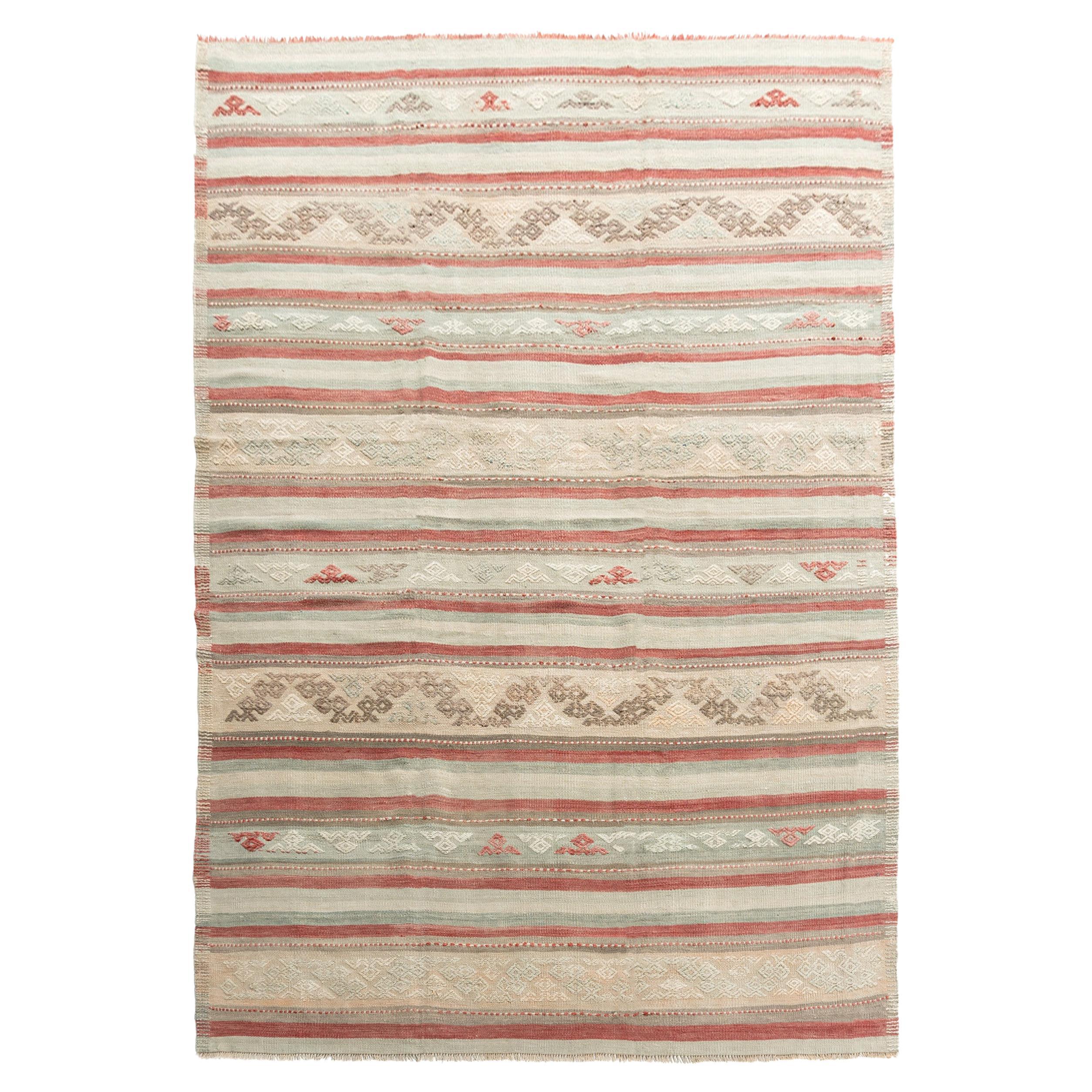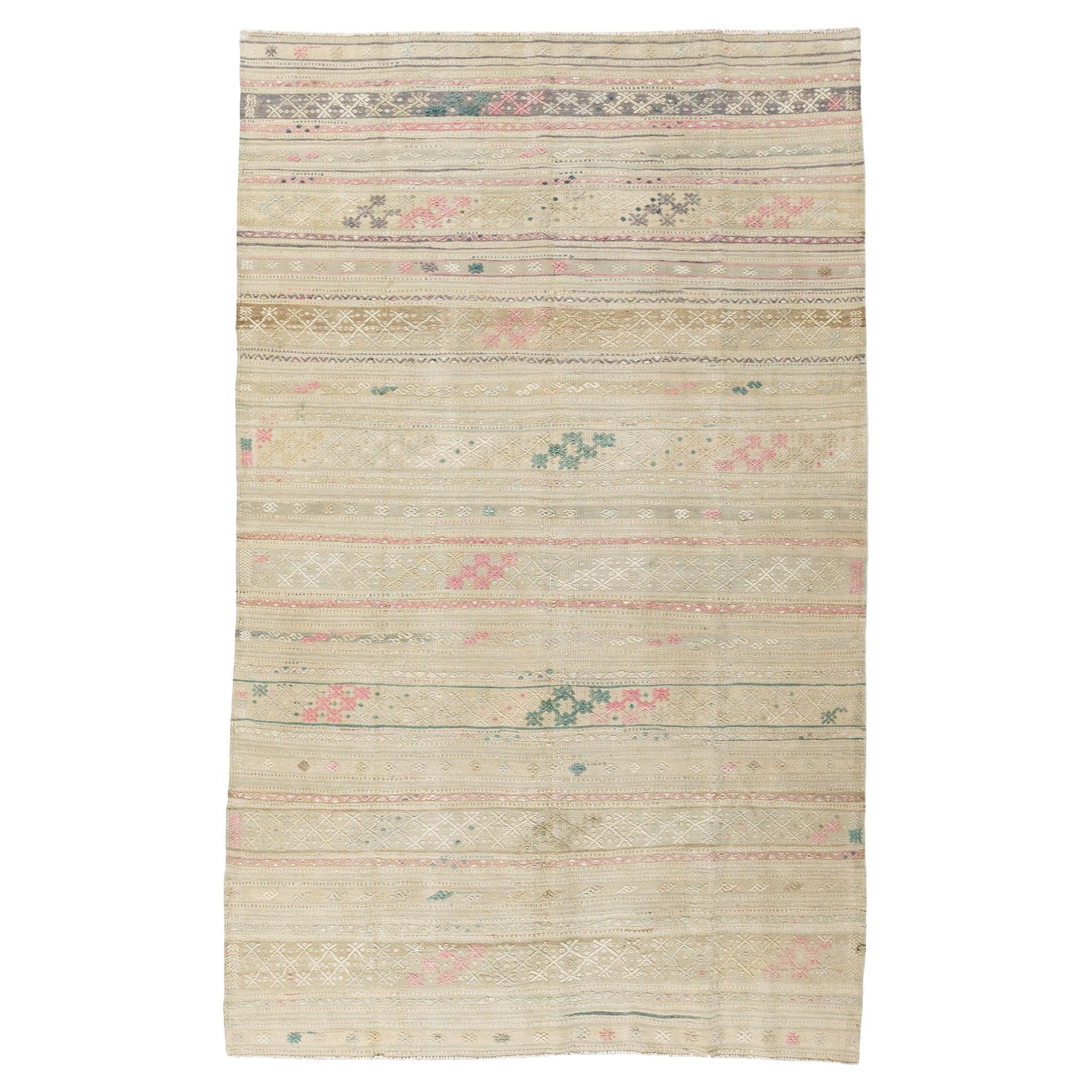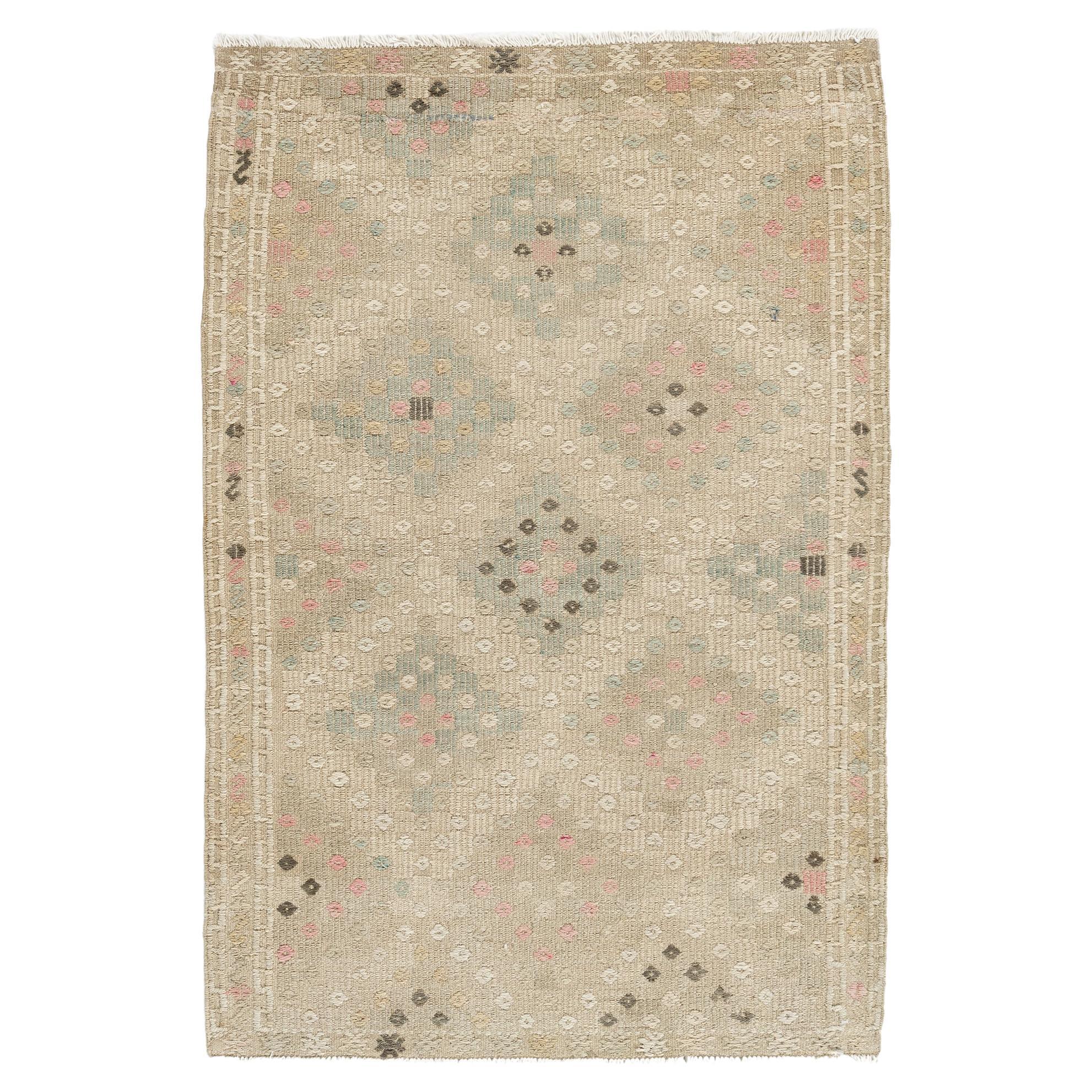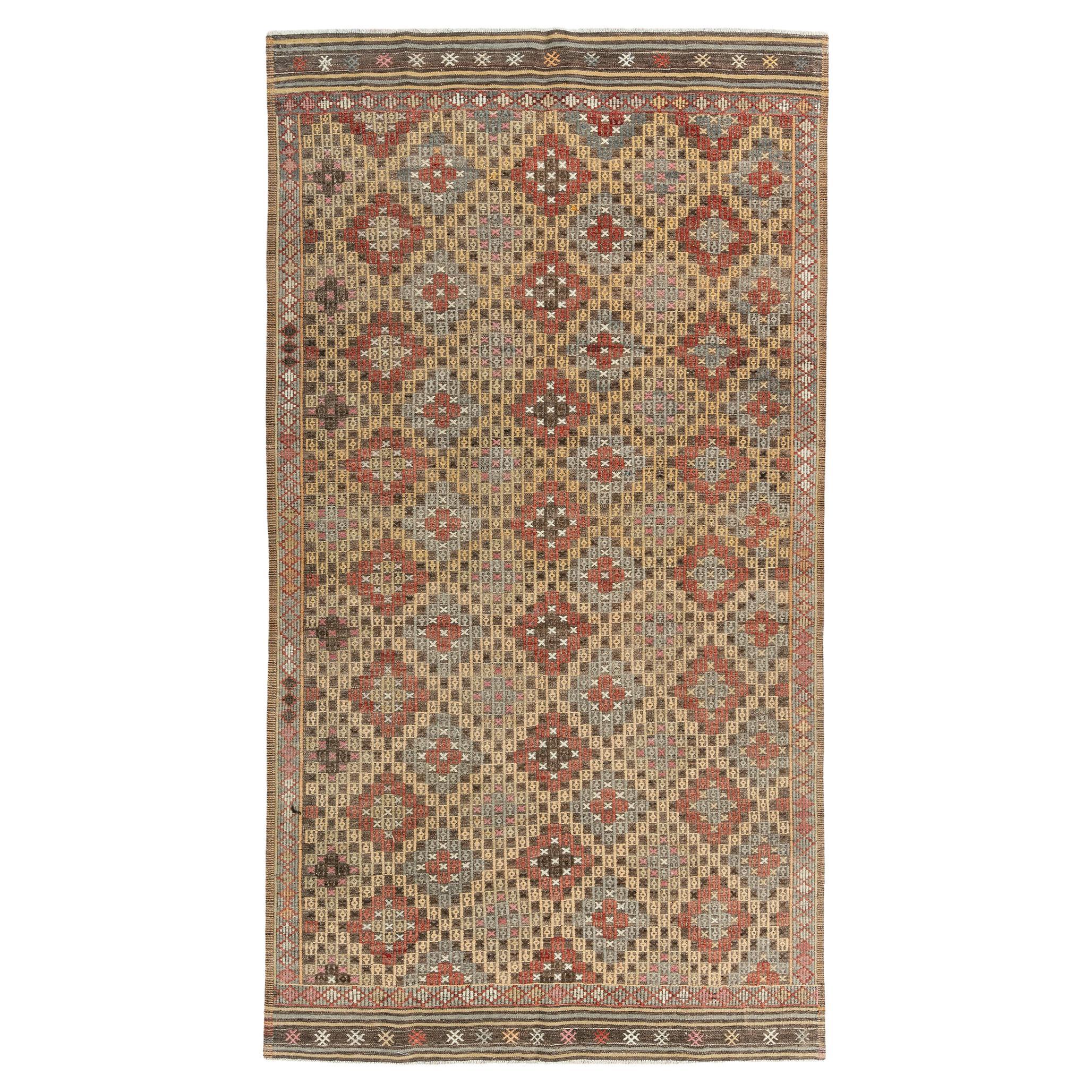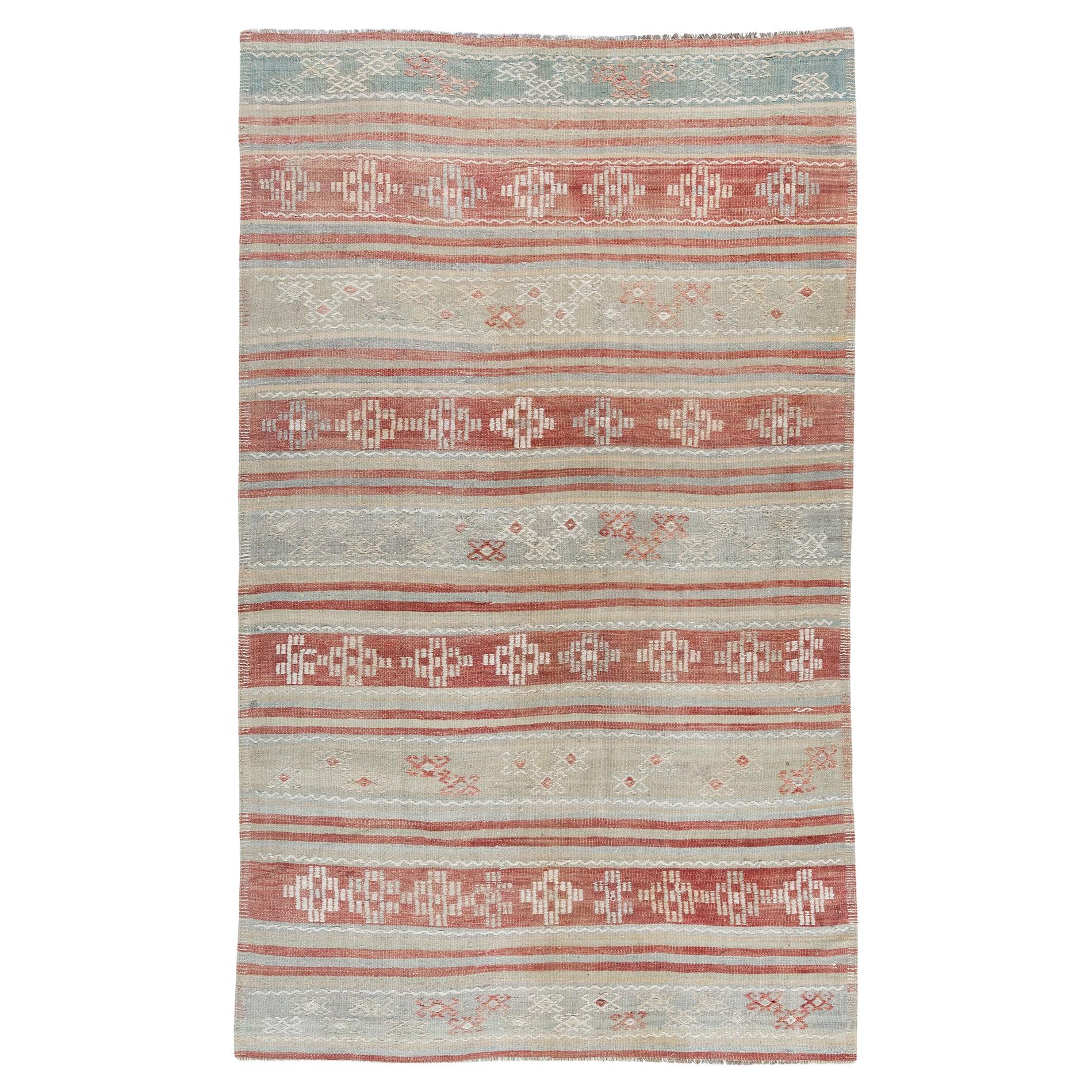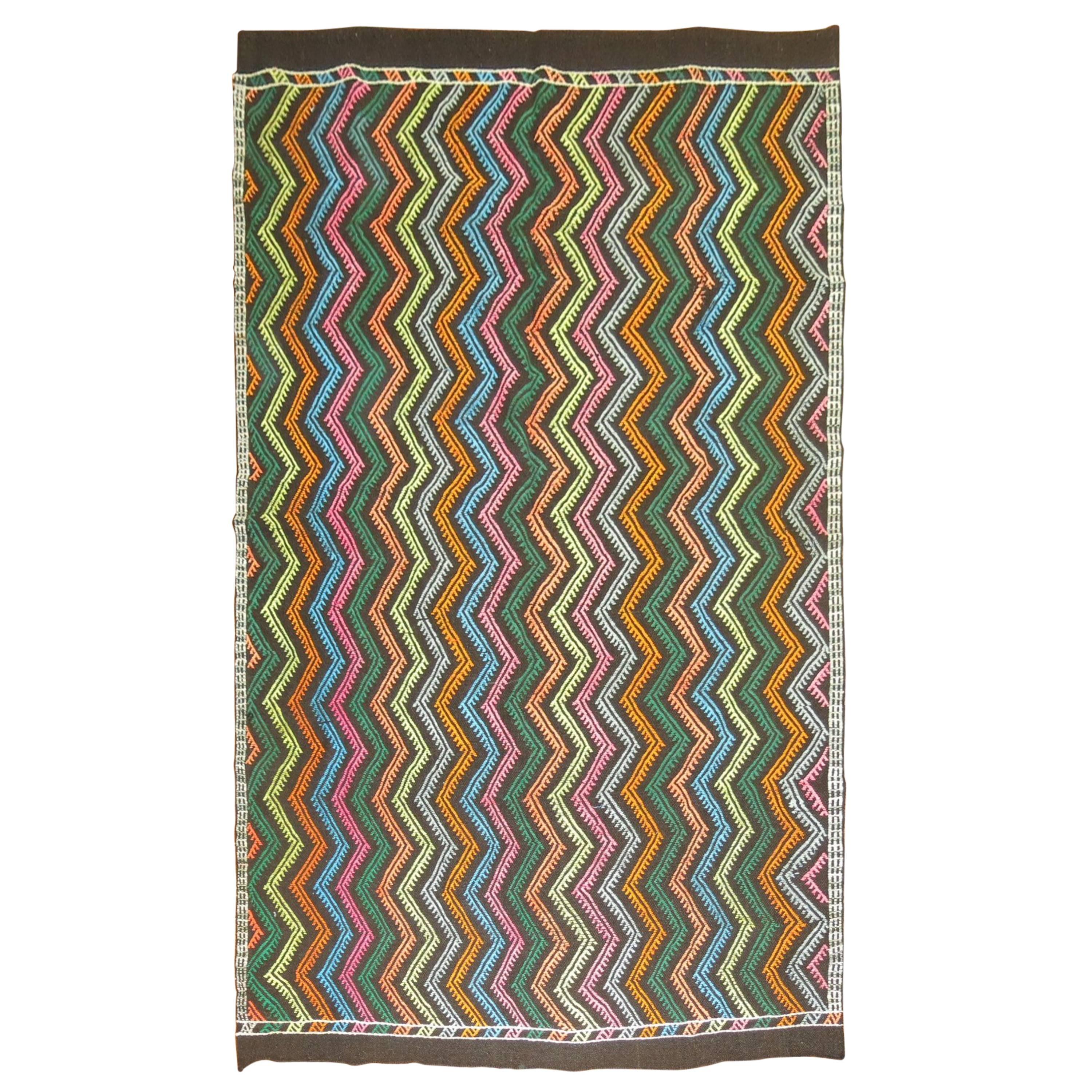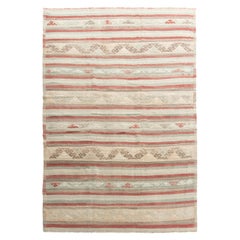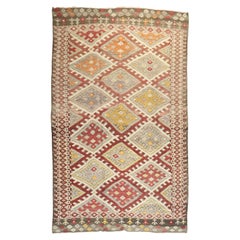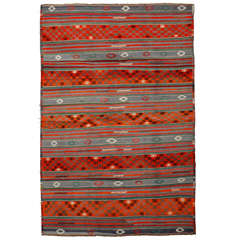
Vintage Turkish Jajim Rug
View Similar Items
1 of 4
Vintage Turkish Jajim Rug
About the Item
You May Also Like
- Vintage Turkish Jajim Area Rug 5' x 8'3Located in New York, NYVintage Turkish Jajim area rug 5' X 8'3. The Jajim (cecim) technique is followed in Turkey, Persia and the Caucasus and consists of a plain weave (equal warps and wefts) ground with ...Category
20th Century Turkish Turkish Rugs
MaterialsWool
- Turkish Vintage Flatweave Jajim Rug 5'5 x 8'6Located in New York, NYTurkish Vintage Flatweave Jajim Rug 5'5 X 8'6. The Jajim (cecim) technique is followed in Turkey, Persia and the Caucasus and consists of a plain wea...Category
20th Century Turkish Turkish Rugs
MaterialsWool
- Tribal Jajim Kilim Turkish RugLocated in New York, NYMid 20th century Tribal Turkish Jajim kilim with a geometric desing with rustic colors Measures: 6'11” x 10'5” With the Jijim weaving technique, different colored threads are a...Category
Mid-20th Century Turkish Kilim Turkish Rugs
MaterialsWool
- Vintage Khaki Turkish Jajim Flatweave Area Rug 5'7x9'2Located in New York, NYVintage Khaki Turkish Jajim Flatweave Area Rug 5'7 X 9'2. The Jajim (cecim) technique is followed in Turkey, Persia and the Caucasus and consists o...Category
20th Century Turkish Turkish Rugs
MaterialsWool
- Vintage Beige Turkish Jajim Area Rug 2'10x4'2Located in New York, NYVintage Beige Turkish Jajim Area rug 2'10 x 4'2. The Jajim (cecim) technique is followed in Turkey, Persia and the Caucasus and consists of a plain weave (equal warps and wefts) grou...Category
20th Century Turkish Turkish Rugs
MaterialsWool
- Vintage Turkish Jajim Flat-Weave Rug 6'4 x 10'5Located in New York, NYVintage Turkish Jajim flat-weave rug. With this style of Jajim weaving different colored threads are woven between the warp and wefts The Jajim (cecim) technique is followed in Turkey, Persia and the Caucasus and consists of a plain weave (equal warps and wefts) ground with an added (supplementary) weft pattern. The wefts are usually discontinuous, cut off on the verso (back). The pattern develops as the ground is woven on the loom and not added afterwards as on an embroidered rug. It is easier to make repeating geometric patterns of squares, lozenges, diamonds, stepped diagonal lines and areas of plain color. Sometimes Jajim are in two pieces, stitched together along one long side, depending on the width of the loom. The Jajim technique seems to go back well into the 19th century in Turkey, but, since the flatweaves are generally made for household use and tossed out when worn, few early antique examples...Category
20th Century Turkish Kilim Turkish Rugs
MaterialsWool
